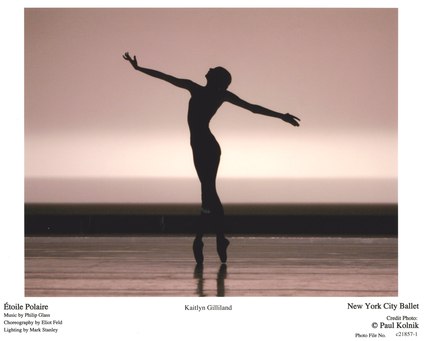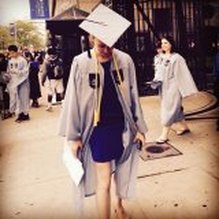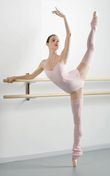Following the completion of my undergraduate studies this spring, I was inspired to revisit the essay I hastily wrote for admission to Columbia when I decided to leave the New York City Ballet in 2011. I feel reading it now much as I do when I watch old videos of myself dancing: embarrassed, slightly detached, and convinced that it was better experienced live. But also, despite these insecurities, glad I gave it the old college try. The essay was originally composed on December 2, 2011. It is slightly edited for length as presented here but otherwise untouched.
First, a few items worth consideration:
1) From 2012-2015, I occupied four more positions within the New York City Ballet and associated organizations, including those of instructor and manager
2) At the time I wrote the essay, I was applying for readmission to Columbia following academic probation (administered after I neglected to show up for a molecular biology class for an entire semester) and a brief stint at Fordham University
3) During my time at Columbia, I changed my course of study three times, from Neuroscience/Premed to English to, finally, Psychology.
And, more importantly, I’ve included one very special memory that immediately resurfaced when I first reread the essay -- right after Albert Evans passed away.
For years, my mother kept a yellowing scrap of paper propped up against her kitchen window. Scribbled almost illegibly in pencil, a Leonard Cohen verse read: “Ring the bells that still can ring/Forget your perfect offering/There is a crack in everything/That’s how the light gets in.” Catching a glimpse of those words almost daily, I internalized the lyrics without attempting to understand their meaning. As a talented young ballet dancer with a place in George Balanchine’s celebrated New York City Ballet, I did not have time to contemplate the beauty of imperfection. The only light that mattered was the spotlight.
Throughout my elementary, middle, and high school years, my all-female dance classes became a sanctuary from the insecurities that came with growing up; a respite from the realities of pre-pubescence and adolescence. Despite my social awkwardness, I worked hard in school and maintained strong grades. A close friend once observed that I approached ballet and my flashcards with equal ferocity. My focus on academic achievement, my unfortunately gangly body, and my extreme social anxiety earned me “nerd” status at school. In ballet class, I found my beautiful, confident, and accomplished alter ego.
When I moved to New York at sixteen to study at the School of American Ballet, I immediately fell in love with the New York City Ballet. The femininity, the musicality, and the individuality of the company’s female dancers astounded my still-maturing self. Two weeks before I was scheduled to start my hard-earned and much coveted apprenticeship with the company, a pop in my left knee announced the arrival of my first major injury. At seventeen years old, I was a kid facing my mortality as a dancer. Caught between the concept of having my whole life ahead of me and the possible death of my ballet career, I found myself trapped between my actual youth and my imagined old age. The practical, ‘older’ side of me learned, with an injury like this, that dancing would not last forever.
My first application and acceptance to Columbia School of General Studies, almost straight out of high school, came with this sudden awareness of the fragility of my chosen profession. My desire to be a student at Columbia, my ideal academic environment, would be the first step on a broader life path. Between my morning “Frontiers of Science” lecture and my afternoon discussion section, I would wander around the sun-sprinkled campus in awe, observing the contrast between its vibrant, cohesive energy and my own detached existence on the fringes of student life.
My withdrawal from the community at Columbia only exacerbated my fear of speaking up in the classroom. My shyness came not merely from my unwillingness to embarrass myself in front of my intelligent peers but also from my assimilation to my work environment over the years. Dancers learn, from a very young age, to nod, smile, and take direction. Perfection is expected; missteps costly. Classrooms were the antithesis of this: to my peers, speaking and argument were second nature; to me, language was not my first language. Dance was.
There is no such thing as an ordinary experience with the New York City Ballet. Mine, however, was immediately extraordinary. Despite my doctor’s warnings, my knee healed well enough for me to gradually cast off my fears of an untimely retirement. Suddenly my career regained its previous promise: even before I became an official member of the corps de ballet, I premiered an eleven minute solo choreographed by Eliot Feld. (** The solo was titled “Etoile Polaire,” and Albert Evans never let me forget it!! Whenever I’d enter a room, he’d happily announce to anyone present that “Etoile” had arrived, and then he’d put his hand on his hip, bat his eyelashes, and look at me expectantly. Never failed to make me laugh – and to remind me to stop taking myself so seriously. The most wonderful, hilarious, welcoming, generous friend.**)
Thereafter I gained an official place in the company and quickly began learning roles behind Wendy Whelan and Maria Kowroski, two of the company’s great ballerinas. I rehearsed and performed principal parts in ballets by George Balanchine, Jerome Robbins, and Christopher Wheeldon while also carrying the typical load of a corps de ballet dancer. I worked with many choreographers who appreciated my interest in their often unfamiliar movement vocabulary.
The courage to express myself as an artist, a strength I could not find in the classroom, came with my growing responsibilities in principal roles. A dancer’s personality emerges from movement: the way she registers music, stretches or extends a phrase, tilts her head, or elongates her line. Dancing was the medium in which I felt safe to communicate, and as I became increasingly encouraged to develop my stage persona through more difficult endeavors, I felt nothing more pressing than the perfection of my art. After one quiet semester at Columbia, I slipped away from my academic obligations to focus on my ballet career.
As I worked my way through the repertory at New York City Ballet, I eventually learned that a typical season could bring either a nearly unbearable workload or, conversely, weeks without a performance. During one particular lull, I made a decision to continue my studies at Fordham University. Because dance occupied most of the space in my mind, I did not crave academic challenge as much as I craved perfection both on stage and in the classroom. I viewed excellence as a combination of good reviews and great grades. At Fordham, I drifted in and out of classes within an accommodating and protective environment just a block from the theater.
After a surreal winter season made especially memorable by my receipt of the company’s annual Janice Levin Dancer Award, my foot gave out on me. Six months later, second, third, and fourth opinions on my foot informed me a dance career was no longer on the table. When I ran into colleagues or old friends, they would knit their brows sympathetically and whisper, “You must be devastated.” I was. My injury immediately cast me out of New York City Ballet’s insular and comforting community.
According to legend, Balanchine encouraged the isolation of his dancers from the real world. Laying out the plans for the backstage area of the New York City Ballet’s theater at Lincoln Center, he supposedly vetoed the inclusion of windows in its design because he did not want his dancers to be able to look outside at the distractions of life beyond ballet’s walls. Whether the story of Balanchine’s design is truth or myth, it suggests that within the confines of his famous theater, there exists a world sequestered from the surrounding vitality of New York.
Without the natural light that windows provide, the studios, hallways, and dressing rooms remain muted by the building’s fluorescent lighting. Dancers who spend a winter season workday in the lovingly nicknamed “rat maze” often look surprised when they come out of the theater’s dim hallways to find they have missed an entire day’s natural light. Dancers fortunate enough to leave the theater at a sunny lunchtime hour shrink away with their eyes shielded when they first register the sun. I felt, with this injury, as though I had been thrown out into the middle of Lincoln Center Plaza on a cloudless day.
Though I had caught glimpses of a world outside of dance, I initially stayed in the shadows. As I continued to mourn the loss of my passion, I threw myself into a full semester in Fordham University’s familiar routine. Humbled without the core of my identity, I gradually admitted my ballet expertise rendered me a novice in most other subjects. Stripped of any ego, I developed more new and rewarding friendships in twelve months than I had in twelve years. When a good friend nicknamed me “nerd” because of my tendency to steer dance small talk towards substantive conversation, I embraced my familiar identity with a new perspective. The name no longer marked my social awkwardness. It marked a hunger to learn.
During my semester at Fordham, I had found an orthopedist who, with a simple fifteen minute operation, fixed my foot. Just as I had begun to accept a new life without dance, my doctor patted me on the shoulder and said, “Okay, you can go back to ballet now.” I initially resisted: I had created new goals and dreams that discounted ballet from my future. As I returned to ballet class, however, my foot felt too good to walk away. After over a year, I returned to the New York City Ballet.
During our rehearsal months, the company works in the Rose Building at Lincoln Center. Unlike the rehearsal rooms at the theater, the studios at the Rose Building have huge windows which let in a lot of natural light during the work day. On the tail end of a busy afternoon rehearsal, the sun had moved so that it created a large patch of light on the studio’s floor. As its rays continued out from behind the clouds, they filled the studio with their glow. I found myself standing in the light, basking in the warmth of an October sun on my shoulders. Noticing many of the other dancers squinting and complaining, the ballet mistress pulled the shades and the rehearsal commenced under the studio’s bleak fluorescent tubes. That day in the studio, the darkness illuminated what I had not yet been able to see clearly: I now craved more than just the spotlight. I craved the sunlight.
My ballet career has, twice, proven me breakable. My physical vulnerabilities humbled me, faintly at first and then deafeningly. That’s how the light finally got in. I rediscovered all that I still possess outside of my dancer self. After many fulfilling years at New York City Ballet, I’m hungry for a new kind of sustenance: the uncertainty and adventure that will help me grow into the next phase of my life.
Now, when I look up in awe at the beautiful and imposing buildings of Columbia’s campus, I feel a little unsteady on my feet just as I once did when premiering a new ballet. When I pore over course offerings in areas I hope to pursue- Psychology, English, and Sociology, I get butterflies at the prospect of studying these subjects from exceptional professors just as I once did when getting coached by a great ballerina. When I consider the many new perspectives I will encounter on such a vital campus of talented and driven students, I feel as excited to find my place in this group as I once was to find my place in the legacy of Balanchine’s great company. When I imagine my next few years at Columbia University, my future suddenly looks bright.



 RSS Feed
RSS Feed